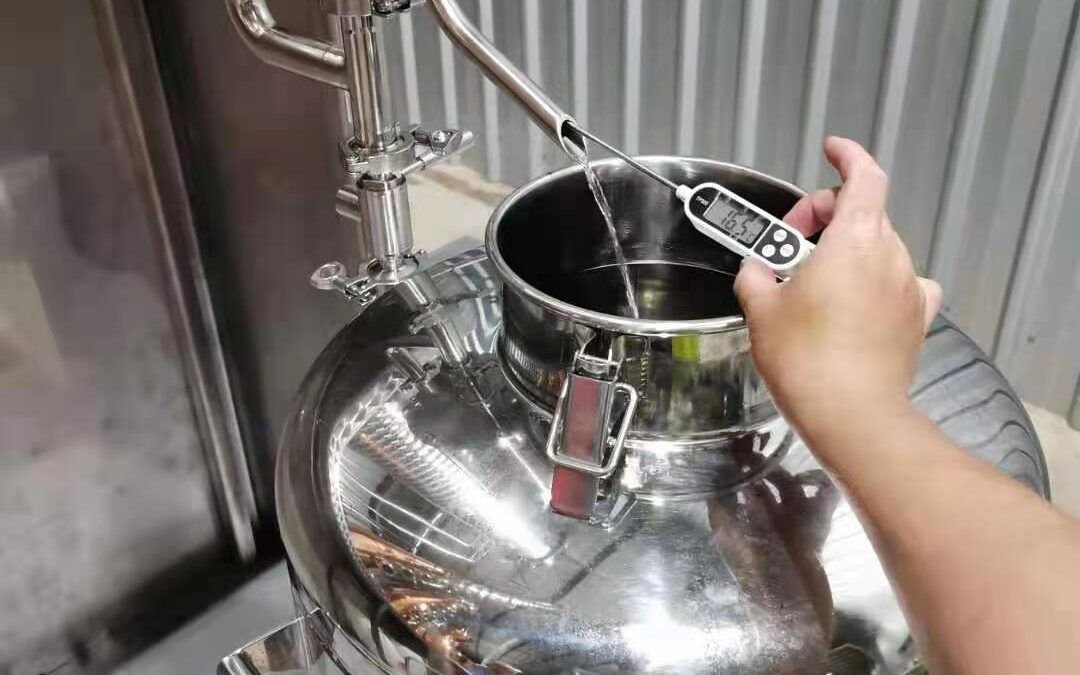The History Of French Distilling
The history of French distilling dates back centuries and is deeply intertwined with the country’s rich cultural heritage. Distillation, the process of separating and purifying liquids through heating and condensation, has been practiced in various forms in France since ancient times. Here is an overview of the history of French distilling:
- Early Beginnings: The origins of distillation in France can be traced back to the medieval period when Arab alchemists introduced the concept to Europe. Their knowledge of distillation techniques, acquired from their interactions with Eastern cultures, made its way to France through trade routes. Initially, distillation was primarily used for medicinal purposes and the production of perfume.
- Renaissance and the Birth of Eaux-de-Vie: Distillation gained popularity during the Renaissance, particularly in the 16th century. At this time, the term “eau-de-vie” (water of life) emerged to describe the distilled spirits produced in France. These spirits were often made from grapes and other fruits. One of the earliest recorded instances of eau-de-vie production is from the region of Cognac, where locals began distilling wine to create a brandy-like spirit.
- Rise of Cognac: Cognac became one of the most renowned French spirits and played a crucial role in the development of the country’s distilling industry. In the 17th century, Dutch merchants introduced the concept of double distillation to Cognac, resulting in a smoother and more refined spirit. The region’s favorable climate and soil conditions also contributed to the production of high-quality grapes for distillation. The establishment of trade routes and the popularity of Cognac among European nobility further propelled its growth.
- The Absinthe Craze: During the 19th century, France experienced the “Belle Époque,” a period characterized by artistic and cultural flourishing. This era also witnessed the rise of absinthe, a highly alcoholic and anise-flavored spirit. Distillers in Pontarlier, a town in eastern France, became known for producing absinthe, which gained immense popularity among artists, writers, and bohemian circles. However, concerns over the drink’s supposed hallucinogenic properties and its association with social issues led to its eventual ban in 1915.
- Regional Specialties: Beyond Cognac and absinthe, various regions in France developed their own distinct spirits through local distilling traditions. For example, Armagnac, produced in Gascony, southwestern France, is another well-known brandy made from grapes. Calvados, originating in the Normandy region, is an apple or pear brandy. Many other fruit-based eaux-de-vie, such as cherry, plum, and raspberry, are produced in different regions across the country.
- Modern Era: In the 20th century, the French distilling industry continued to evolve. The establishment of regulations and designations of origin protected the authenticity and quality of spirits like Cognac and Armagnac. The craft distilling movement also gained momentum, with smaller producers experimenting with innovative techniques and creating unique spirits, often focusing on local botanicals and flavors.
Distilling Flavor Profiles
In distilling, the flavor profiles of different spirits can vary widely based on the ingredients used, the distillation process, and aging techniques. Here are some of the key types of flavor profiles you may encounter in distilling:
- Fruity: Many spirits, especially those derived from fruits like grapes, apples, or pears, exhibit fruity flavor profiles. These flavors can range from fresh and crisp to rich and luscious, depending on the specific fruit and the level of fermentation and distillation. Examples include the fruity notes found in grape-based spirits like Cognac or Armagnac, or the apple and pear flavors in Calvados.
- Floral: Some spirits display floral flavor profiles, featuring delicate and aromatic notes reminiscent of flowers. These flavors often come from botanicals used in the distillation process, such as flowers, herbs, or spices. For instance, certain gin varieties are known for their floral characteristics derived from ingredients like lavender, rose petals, or chamomile.
- Herbal: Herbal flavors are prevalent in many spirits, particularly those infused with botanicals or made from herbs and roots. Absinthe, for example, exhibits a distinct herbal profile due to the inclusion of herbs like wormwood, anise, and fennel. Other herbal spirits, such as Chartreuse or aquavit, feature a wide range of herbal notes obtained from various botanicals.
- Spicy: Spices can lend warmth and complexity to spirits, resulting in a spicy flavor profile. Common spices used in distilling include cinnamon, clove, cardamom, nutmeg, and pepper. These flavors can be found in spirits like spiced rum or certain whiskies that incorporate a blend of spices during the aging process.
- Smoky: Some spirits acquire a smoky flavor profile through processes like smoking the grains or aging in charred barrels. Scotch whisky, especially those from the Islay region, often exhibits prominent smoky or peaty notes. Mezcal, a Mexican spirit made from smoked agave, also boasts a distinctive smokiness.
- Nutty: Nutty flavors are frequently found in aged spirits that spend significant time in oak barrels. As the spirit interacts with the wood, it develops flavors like almonds, walnuts, or hazelnuts. Sherry and certain brandies often showcase nutty profiles due to extended barrel aging.
- Malty/Grainy: Spirits made from grains, such as whiskey or vodka, can showcase a malty or grainy flavor profile. These flavors are influenced by the type of grain used, the malting process, and the fermentation and distillation techniques employed. Malt whisky, for example, often exhibits cereal-like or toasted grain notes.
- Sweet: Some spirits have a naturally sweet flavor profile, resulting from the presence of residual sugars or the use of sweet ingredients during production. Liqueurs, such as amaretto or fruit liqueurs, are known for their sweet profiles due to added sugars or fruit syrups.
These are just a few examples of the diverse flavor profiles that can be found in distilled spirits. Each spirit category has its own unique characteristics, and within those categories, individual brands and expressions can offer a wide range of flavors, making the world of distilled spirits incredibly rich and varied.
Manual System Distilling
Distilling on a manual system, also known as artisanal or craft distilling, offers several advantages that appeal to distillers and enthusiasts who prefer a more hands-on approach. Here are some advantages of distilling on a manual system:
- Creativity and Artistry: Manual distilling allows distillers to have greater control over the entire distillation process, enabling them to showcase their creativity and artistry. They can experiment with different ingredients, fermentation techniques, distillation methods, and aging processes to create unique and innovative spirits. This hands-on approach allows for customization and the production of small-batch, artisanal spirits with distinct flavor profiles.
- Quality Control: Manual distilling allows for meticulous quality control throughout the entire production process. Distillers can closely monitor and adjust variables such as temperature, reflux, and cuts during distillation to ensure that only the best spirits are collected. They can make real-time decisions based on sensory evaluation and adjust the process accordingly to achieve desired flavor, aroma, and texture characteristics.
- Flexibility and Adaptability: Manual distilling systems offer flexibility and adaptability, making it easier to experiment with different recipes, ingredients, and production methods. Distillers can adjust the process on the fly, making modifications and refinements as needed to achieve the desired results. This agility allows for continuous improvement and the ability to respond to customer preferences or market trends more quickly.
- Hands-On Learning and Skill Development: Manual distilling systems provide a valuable learning experience for distillers. By engaging in hands-on production, distillers can develop a deep understanding of the science and art behind distillation. They gain firsthand knowledge of how different factors impact the final product, such as the selection of raw materials, fermentation conditions, and distillation techniques. This practical knowledge and skill development contribute to the growth of expertise and craftsmanship.
- Sustainability and Environmental Impact: Manual distilling systems often prioritize sustainability and environmentally friendly practices. Craft distillers may opt for organic or locally sourced ingredients, reducing the carbon footprint associated with transportation. They can also make conscious choices regarding energy consumption and waste management, striving for more sustainable operations. Additionally, small-scale manual systems may have lower energy requirements compared to larger, automated setups, resulting in reduced environmental impact.
- Connection with Consumers: Manual distillers often have a closer connection with their consumers. Craft distilleries are typically smaller and more intimate, allowing for direct interaction with visitors and the ability to share their passion and story behind the spirits. This personal connection enhances the overall experience for consumers and fosters a sense of community and loyalty.
While manual distilling systems offer numerous advantages, it’s worth noting that they also require more hands-on labor, expertise, and time commitment compared to automated or industrial-scale setups. However, for those who value the artistry, customization, and quality associated with manual distillation, these advantages make the process rewarding and fulfilling.
Today, France is renowned for its diverse range of distilled spirits, including Cognac, Armagnac, Calvados, and a wide variety of fruit eaux-de-vie. The country’s distilling heritage remains an integral part of its cultural identity, and French spirits continue to be celebrated both domestically and internationally.

